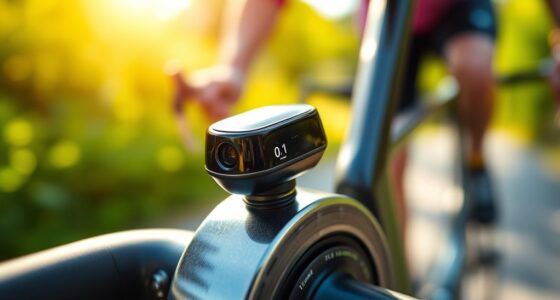
When you’re on a bike and climbing hills, it’s important to know what bicycle gears to use. The right gear can make a big difference in your speed, energy level, and muscle power.
You should always choose a lower gear for climbing than you would for riding along a flat road. This will allow you accelerate faster and not exert too much effort with each pedal stroke.
High Gear
Choosing the right bicycle gears can be a confusing and frustrating task for cyclists, especially beginners. This is particularly true when you are climbing hills–the wrong gear can be extremely taxing and lead to grinding your pedals to a halt.
In order to avoid this, it is recommended that you practice changing bike gears before you ride uphill. This will make the transition easier and help you to maintain your momentum during the climb, as well as avoid unnecessary tension on your chain that can occur when shifting gears at a high cadence.
For beginners, it is best to practice riding uphill in a low-traffic area so you can test each gear. This will help you determine which gears are most comfortable and the best for your bike.
You can also perform intervals that involve cycling uphill in a slightly heavier gear than you would normally use to help build leg strength and improve your cadence. If you can keep up the same pace on these intervals, your legs will have adapted to the new training stimulus, and you will be able to use a much higher cadence with improved perceived exertion.
Insufficient leg strength is a major factor in many people’s climbing ability. It is important to build leg strength by cycling uphill in heavier gears than usual.
It is important to choose the right gear ratio for your riding style and personal strength. A common gear ratio that works for most riders is 48/17. This combination of gears works well on most trails with minor and occasional hills.
It is also important to know when it is appropriate to shift gears–if you do not, you could end up with a dropped chain. This can be very embarrassing and can lead to serious damage to your bike if you are not careful!
Low Gear
You should be able choose the right bike gear for climbing hills depending on your riding conditions. Generally, a lower gear is more suitable than a higher gear for this purpose. This is because pedaling uphill requires more effort to maintain the same speed as you would on a flat surface.
It is possible to increase your cycling efficiency and comfort by choosing the right bike gears. This will make it easier to conquer difficult hills. This skill is essential for a cyclist and can transform the riding experience.
It is important to note that this advice is specific to your bike and riding conditions, so it is best to experiment until muscle memory is formed. To find the best gear for you, it is a good idea, in different situations (e.g climbing or descending) to test out different bike gears.
If you find climbing hills difficult, you might try changing your gears to a more comfortable one before the climb begins. It is a good idea to change your gears before you start climbing up hills. This will prevent you from putting too much strain on your legs and could cause your chain to break or slip.
A good tip to help you choose the right bike gears is to check the sprockets in your cassette. It will be easier to change the gears if the largest sprocket in your rear cassette is large (like 28 teeth).
You should also consider your chainrings and cogs, and what each will do for you. A larger front chainring is better suited for steep climbs, while a smaller cog is better for flat terrain.
A low-geared bike will make climbing easier because it allows you to pedal at a lower speed and with less pressure. This can be particularly useful if you’re new to cycling, as it helps you get comfortable with the equipment.
It can be difficult to find the right gear for your bike. But it doesn’t have too! Once you are comfortable with your bike and the way it works, it will become second nature.
Middle Gear
When climbing hills, it is important to use bicycle gears that will allow you to pedal efficiently. Low and middle gears are the best for this. A small front chainring and a variety of smaller rear cogs will make bikes easy to ride on flat roads. They’ll also keep you turning your bike pedals uphill.
It is difficult to climb up steep hills. Therefore, it is important to choose a gear that is comfortable to climb at. This will allow you to maintain a high cadence for as long and help you to have a more relaxed breathing pattern and lower heart rate.
There are several ways to determine which gear is best for you. These include understanding how mountain bikes work and how to use shifters properly. You can do this by getting outside and riding, or by trying different gears on a stationary bike and experimenting with muscle memory.
One way to find the most effective gear for a particular hill is to start on a flatter surface and increase your speed gradually until you reach the top of the hill. As you gain speed, shift to the next gear. This will help to make the transition feel smoother and faster.
Another way to determine the most effective gear is to try climbing up your favorite hill in a slightly heavier gear than you typically use. Your legs will quickly adapt to this change in speed and you’ll soon be climbing up the hill at a higher cadence with improved power output.
Insufficient leg strength is a common reason why cyclists don’t climb as well. This can be overcome by cycling hills in intervals using a heavier gear than usual.
The purpose of this is to improve your muscular strength and aerobic conditioning so that you can climb more efficiently in the future. This can be done by climbing up your favorite climb three times per hour in a gear that reduces your cadence by at most 10 rpm.
Highest Gear
Choosing the right bicycle gears is an important part of becoming a better biker. You can make a big difference in how fast you pedal and how tired your legs feel.
Ideally, you want to select the highest gear that allows you to spin a consistent cadence at a reasonable speed. This will allow you to maintain a steady pace, and prevent your legs from getting tired as you climb.
The gear you choose will depend on your riding style and terrain. However, the most common range of gears for climbing is between a 6 and 7 on a double chainring bike or a 4 to 5 on a single chainring bike.
Lower gears can also be used, but they will require more force from your legs and reduce your top speed. This makes them difficult for beginners and less fit cyclists.
For those who are stronger and fitter, they can use higher gears to climb hills while still maintaining their speed. The wrong gear can make it difficult to climb hills and frustrate riders.
In addition, you should avoid cross-chaining (stretching your chain across a cog with more teeth than another). This can cause your chains to break and can result in you losing precious time during the climb.
You may be tempted to go with a gear that is slightly below the lowest on a steep climb to save your legs from getting too tired. This strategy is not always successful.
Instead, you can try shifting up a gear on your left shifter when you reach the top of the hill. This will allow you to pedal faster to gain traction.
You’ll eventually reach a point when you can drop into your lowest gear while continuing to pedal up the hill without needing to pedal hard for traction. This is a great way for you to prepare for steeper climbs, and it will also increase your confidence while riding up the hill.
It doesn’t matter if you are a beginner or a pro, choosing the right bike gears can be difficult. With some guidance, you will be able to find the right gears for climbing.









